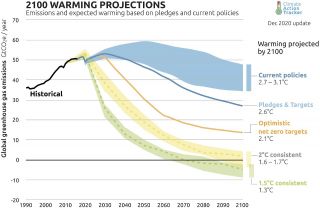
www.buildingsandcities.org/insights/commentaries/urban-demographic-trends.html
Urban Demographic Trends: Impacts on Cities, Planning and Real Estate

How can large cities respond to the loss of population, a higher vacancy rate and a reduced economy and tax base?
Although the world is increasingly urbanising, it is medium and small cities that may benefit the most. If large cities will shrink in population, then how can spaces that are underutilized be redeployed and repurposed? Chiara Tagliaro (Politecnico di Milano) argues for a creative and integrated approach for how cities can rethink their socio-economic and planning models to accommodate revised notions of urbanization.
Over 50% of the world population now lives in urbanized areas, with 180,000 people per day moving into cities. In 2018 more than 30 cities exceeded 10 million inhabitants, and about 50 cities have between 5 to 10 million (United Nations, 2018). Nevertheless, recent evidence suggests that the projections of population distribution might need to be revised after Covid-19. For many large cities a reversed trend had started already before the pandemic.
In contrast with theories of proximity (Boschma, 2005) and research on clusters, central business districts (CBDs) or job location (e.g. Li and Monzur, 2018; Shearmur, 2012), corporations are relocating to medium-sized cities because they are cheaper in terms of cost of labour, more attractive to workers in terms of living standards, affordability and work-life balance (Cushman & Wakefield, 2020). US cities (e.g. Nashville, Austin, Raleigh/Durham and Salt Lake City) have been growing in the past years due to the relocation of corporations including Amazon and Apple (Cushman & Wakefield, 2020). Vaattovaara (2020) has shown that an increasing emphasis on the quality of the physical environment and quality of life is making smaller cities and towns a more viable and desirable alternative to large cities.
Covid-19 has exacerbated and accelerated this movement, and the real estate market is going to experience major consequences. The bank Morgan Stanley anticipates future office demand will diminish, due to incremental working from home. The estimates for the US office vacancy range between 16% and 26% (Morgan Stanley, 2020). Investors expect a reduction of about 10% in the stock of office space in big cities (The Economist, 2020). Individuals are also abandoning metropolises in favour of smaller cities, peripheries or villages. Covid-19 suggests that commuting and aggregation in large cities are not essential. This happens especially where work contracts are flexible and work connections are increasingly virtual. It has been calculated that 89,000 households have moved out of San Francisco since the coronavirus outbreak. This is based on the requests for a change of address between March 1 and November 1, 2020 registered by the United States Postal Service and San Francisco-based site Public Comment (Hartmans, 2020). This was followed by a 20% drop in residential prices (San Francisco Chronicle, 2020). Most people do not like commuting and the younger generations prefer walking or cycling to work.
These changes suggest a redistribution of economic activities is occurring (Stevens and Shearmur, 2020). Cities will have to rethink their socio-economic and planning models to accommodate revised notions of urbanization. A shift in our consumption and life habits have the potential to influence the geographical distribution of population.
If large cities will shrink in population, then how can spaces that are underutilized be redeployed and repurposed?
First, the sharing economy opens new possibilities for the use of physical resources. The emerging lessons from a shift in private car ownership to shared access through car clubs as a service can be applied to the real estate sector. Wackernagel and Rees (1996, p. 118) wrote: "It might be sustainable to operate a gas guzzling Rolls Royce if it was shared among twenty friends and maintained for a long time. On the other hand, it might be unsustainable for everybody to own an electric car". Certifications to prove the greenness of buildings should be extended over the in-use phase by calculating the effectiveness of energy use based on the number of people benefitting from them (Pomé, Tagliaro, & Ciaramella, forthcoming). This would be highly impactful in showing people the importance of sharing.
Second, the planning and operation of cities can focus on the distribution of services and economic activities. Digitalization might help conceive economic activity as relating to urban space by way of trajectories (punctuated by specific places) rather than by way of location (Stevens and Shearmur, 2020). This would support the creation of a 15-20 minute city (McNeil, 2011) where the majority of day-to-day services are within walking or cycling distance and things happen in-between, not only at destination. This would entail a decentralisation of services but also a higher density of population to sustain local services. Higher density is likely to increase land costs which means that property becomes more expensive and small shops or services might be suffocated by high overheads. Therefore, extreme care is needed to preserve the desired quality of life issues. However, hybrid buildings can be used for a variety of activities to fully exploit space use. New kinds of contracts, leases and rights will be required to:
- enable shared facilities - e.g. multiple users and managers
- allow more flexible design of the building itself - e.g. to host more storage facilities for the accommodation of different furniture for different functions
- avoid rigid functionalism or zoning to transform existing "containers" - e.g. office, residential, logistics, and retail spaces might not be recognisable anymore as distinct building types.
Third, the redistribution of activities will reduce the need for large agglomeration of people due to virtual and non-physical connections across territories. This can boost 'rural heritage-rich communities' (Bucaciuc, Prelicean and Chașovschi, 2020). One implication of people moving to the urban periphery or villages is that house and real estate prices will increase there (due to higher demand) and may decrease in the city centre (due to lower demand). When that happened in the 1970s (in American cities), the tax base eroded and there was a downward spiral which took 20+ years to overcome. Nowadays, digitalization might facilitate new forms of tax calculation and distribution based on criteria of effective consumption and demand in different geographical areas rather than on the basis of residence.
Overall, these shifts could provide a progressive adjustment of urban micro-geographies. Vacant spaces in peripheral areas would host new activities while emptied central areas could de-compress and diversify currently gentrified neighbourhoods. While addressing issues ranging from natural building materials and energy efficiency, to demographics, future-oriented mobility or resource-efficient digital innovation, the European Commission President, Ursula Von der Leyen, launched the idea to combine architecture, design, planning and art into a New Bauhaus movement (European Commission, 2020). Only an integrative approach to creative thinking can support the adoption of a new mentality and the switch to a brand-new paradigm.
References
Boschma, R. A. (2005). Role of proximity in interaction and performance: Conceptual and empirical challenges. Regional Studies, 39(1), pp. 41-45. https://doi.org/10.1080/0034340052000320878
Bucaciuc, A., Prelicean, G. and Chașovschi, C. (2020). Low Touch Economy and Social Economy in Rural Heritage Rich Communities Impacted by COVID-19 Crisis. 16th Economic International Conference NCOE 4.0 2020, 13, pp. 398-409. https://doi.org/10.18662/lumproc/ncoe4.0.2020/36
Cushman & Wakefield. (2020). Reimagine: how and where the world will work post Covid-19. https://www.cushmanwakefield.com/-/media/cw/global/rrtf/reimagine_final.pdf
Hartmans, A. (2020, December 1). As many as 89,000 households have left San Francisco since March, the latest sign of an exodus spurred by the pandemic. Business Insider. https://www.businessinsider.com/san-francisco-lost-89000-households-during-pandemic-usps-data-2020-12
Li, Y. and Monzur, T. (2018). The spatial structure of employment in the metropolitan region of Tokyo: A scale-view. Urban Geography, 39(2), pp. 236-262. https://doi.org/10.1080/02723638.2017.1308182
McNeil, N. (2011). Bikeability and the 20-min neighborhood: How infrastructure and destinations influence bicycle accessibility. Transportation Research Record, 2247(1), pp. 53-63. https://doi.org/10.3141/2247-07
Morgan Stanley. (2020, July 29). How "Work From Home" May Work for Investors. https://www.morganstanley.com/ideas/coronavirus-work-from-home-trend
Pomé, A. P., Tagliaro, C. and Ciaramella, A. (forthcoming). A proposal for measuring in-use buildings' impact through the Ecological Footprint approach. Sustainability.
San Francisco Chronicle (2020, October 2) Bay Area rents keep plummeting in S.F. - the latest data by city. https://www.sfchronicle.com/bayarea/article/Bay-Area-rents-keep-plummeting-especially-in-15613722.php
Shearmur, R. (2012). The geography of intrametropolitan KIBS innovation: distinguishing agglomeration economies from innovation dynamics. Urban Studies, 49(11), pp. 2331-2356. https://doi.org/10.1177/0042098011431281
Stevens, L. and Shearmur, R. G. (2020). The end of location theory? Some implications of micro-work, work trajectories and gig- work for conceptualizing the urban space economy. Geoforum, 111 (June 2019), pp. 155-164. https://doi.org/10.1016/j.geoforum.2020.02.010
The Economist. (2020, September 12-18) Office politics: the fight over the future of the workplace has just begun, p. 15. https://www.economist.com/weeklyedition/2020-09-12
United Nations. (2018). The World's Cities in 2018. Data booklet. https://www.un.org/en/events/citiesday/assets/pdf/the_worlds_cities_in_2018_data_booklet.pdf
European Commission (2020, October 15). A New European Bauhaus: op-ed article by Ursula von der Leyen, President of the European Commission. https://ec.europa.eu/commission/presscorner/detail/en/AC_20_1916
Vaattovaara, M. (2020). Is High Density Necessary for Future Urban Life? Buildings and Cities. https://www.buildingsandcities.org/insights/commentaries/high-density-urban.html
Wackernagel, M. and Rees, W. (1996). Our Ecological Footprint: Reducing Human Impact on the Earth, 9th ed., New Society: British Columbia, Canada, pp. 9-148.Latest Peer-Reviewed Journal Content
A living lab approach to co-designing climate adaptation strategies
M K Barati & S Bankaru-Swamy
Mediation roles and ecologies within resilience-focused urban living labs
N Antaki, D Petrescu, M Schalk, E Brandao, D Calciu & V Marin
Negotiating expertise in Nepal’s post-earthquake disaster reconstruction
K Rankin, M Suji, B Pandey, J Baniya, D V Hirslund, B Limbu, N Rawal & S Shneiderman
Designing for pro-environmental behaviour change: the aspiration–reality gap
J Simpson & J Uttley
Lifetimes of demolished buildings in US and European cities
J Berglund-Brown, I Dobie, J Hewitt, C De Wolf & J Ochsendorf
Expanding the framework of urban living labs using grassroots methods
T Ahmed, I Delsante & L Migliavacca
Youth engagement in urban living labs: tools, methods and pedagogies
N Charalambous, C Panayi, C Mady, T Augustinčić & D Berc
Co-creating urban transformation: a stakeholder analysis for Germany’s heat transition
P Heger, C Bieber, M Hendawy & A Shooshtari
Placemaking living lab: creating resilient social and spatial infrastructures
M Dodd, N Madabhushi & R Lees
Church pipe organs: historical tuning records as indoor environmental evidence
B Bingley, A Knight & Y Xing
A framework for 1.5°C-aligned GHG budgets in architecture
G Betti, I Spaar, D Bachmann, A Jerosch-Herold, E Kühner, R Yang, K Avhad & S Sinning
Net zero retrofit of the building stock [editorial]
D Godoy-Shimizu & P Steadman
Co-learning in living labs: nurturing civic agency and resilience
A Belfield
The importance of multi-roles and code-switching in living labs
H Noller & A Tarik
Researchers’ shifting roles in living labs for knowledge co-production
C-C Dobre & G Faldi
Increasing civic resilience in urban living labs: city authorities’ roles
E Alatalo, M Laine & M Kyrönviita
Co-curation as civic practice in community engagement
Z Li, M Sunikka-Blank, R Purohit & F Samuel
Preserving buildings: emission reductions from circular economy strategies in Austria
N Alaux, V Kulmer, J Vogel & A Passer
Urban living labs: relationality between institutions and local circularity
P Palo, M Adelfio, J Lundin & E Brandão
Living labs: epistemic modelling, temporariness and land value
J Clossick, T Khonsari & U Steven
Co-creating interventions to prevent mosquito-borne disease transmission in hospitals
O Sloan Wood, E Lupenza, D M Agnello, J B Knudsen, M Msellem, K L Schiøler & F Saleh
Circularity at the neighbourhood scale: co-creative living lab lessons
J Honsa, A Versele, T Van de Kerckhove & C Piccardo
Positive energy districts and energy communities: how living labs create value
E Malakhatka, O Shafqat, A Sandoff & L Thuvander
Built environment governance and professionalism: the end of laissez-faire (again)
S Foxell
Co-creating justice in housing energy transitions through energy living labs
D Ricci, C Leiwakabessy, S van Wieringen, P de Koning & T Konstantinou
HVAC characterisation of existing Canadian buildings for decarbonisation retrofit identification
J Adebisi & J J McArthur
Simulation and the building performance gap [editorial]
M Donn
Developing criteria for effective building-sector commitments in nationally determined contributions
P Graham, K McFarlane & M Taheri
Join Our Community

The most important part of any journal is our people – readers, authors, reviewers, editorial board members and editors. You are cordially invited to join our community by joining our mailing list. We send out occasional emails about the journal – calls for papers, special issues, events and more.
We will not share your email with third parties. Read more



Latest Commentaries
COP30 Report
Matti Kuittinen (Aalto University) reflects on his experience of attending the 2025 UN Conference of the Parties in Belém, Brazil. The roadmaps and commitments failed to deliver the objectives of the 2025 Paris Agreement. However, 2 countries - Japan and Senegal - announced they are creating roadmaps to decarbonise their buildings. An international group of government ministers put housing on the agenda - specifying the need for reduced carbon and energy use along with affordability, quality and climate resilience.
Building-Related Research: New Context, New Challenges
Raymond J. Cole (University of British Columbia) reflects on the key challenges raised in the 34 commissioned essays for Buildings & Cities 5th anniversary. Not only are key research issues identified, but the consequences of changing contexts for conducting research and tailoring its influence on society are highlighted as key areas of action.